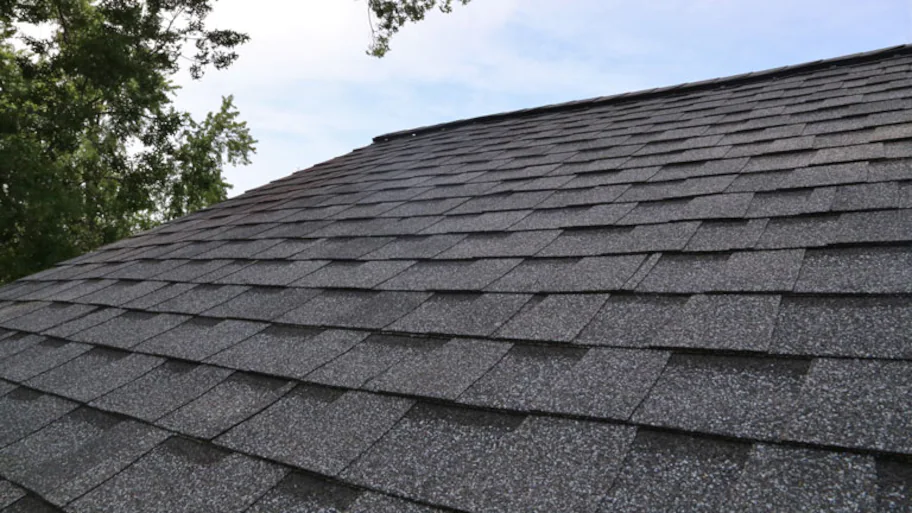A Comprehensive Check Out Roofing Companies Gainesville Citizens Recommend
A Comprehensive Check Out Roofing Companies Gainesville Citizens Recommend
Blog Article
Finest Practices for Ensuring Appropriate Roof Covering Air Flow
A well balanced intake and exhaust air vent proportion, generally 1:300, plays a critical function, with consumption vents ideally positioned at the reduced side of the roof for amazing air entry and exhaust vents at the optimal for warm air departure. Maintaining insulation away from vents is critical to protect against air flow restriction.
Understand Ventilation Fundamentals
Properly recognizing air flow essentials is essential for making certain the durability and performance of roof covering systems. Efficient ventilation alleviates dampness build-up and temperature extremes in the attic room, both of which can cause substantial architectural damages over time. A well-ventilated roof covering helps in stopping common issues such as mold growth, timber rot, and ice dams, which can compromise the integrity of the roof products and the underlying frameworks.
The key goal of air flow is to assist in the activity of air, enabling a regular exchange between the outdoor and interior atmospheres. This equilibrium is attained via a mix of consumption and exhaust vents that collaborate to preserve optimum air movement. Consumption vents, typically situated along the soffits or eaves, enable fresh air to enter the attic space, while exhaust vents, often situated at or near the roof ridge, enable warm, moist air to get away.
Secret factors influencing the performance of roof air flow consist of correct placement, sufficient sizing, and making sure that both intake and exhaust vents are unblocked. Regular inspection and upkeep are critical to recognize prospective blockages, damages, or inadequacies in the air flow system, consequently securing the roofing system's performance and sturdiness.
Sorts Of Roof Vents
Roof vents play an essential duty in keeping reliable attic room ventilation and, by extension, the overall health of the roofing system. Various kinds of roofing vents are offered, each with special advantages customized to particular roof requirements. Ridge vents, for instance, are installed along the roofing system's height, allowing cozy, damp air to leave from the attic. They provide constant air flow and mix seamlessly with the roofline, making them both efficient and visually pleasing.

Soffit vents are mounted under the eaves and operate in tandem with roof covering vents to make certain a balanced consumption and exhaust system. By allowing cooler air to enter from below, soffit vents assist in the expulsion of hot air through upper vents. Gable vents, located on the outside walls of the attic, deal another reliable remedy, especially in homes with saddleback roofs.
Examine Your Existing Ventilation

Following, think about the age and problem of your roofing products and air flow parts. Older systems may not Extra resources follow existing building ordinance or might have weakened over time, lowering their performance. Conduct a detailed examination to recognize any type of indications of deterioration, such as corrosion, damages, or gaps that can jeopardize the system's performance.
In addition, determine the attic temperature level and moisture levels. High temperatures and moisture can indicate insufficient air flow.
Setup Best Practices
Reliable installation of roofing ventilation systems is vital for guaranteeing ideal efficiency and longevity. Correct setup starts with understanding the particular air flow demands of the roofing system and the structure it covers. This involves computing the right proportion of consumption to wear down vents, typically adhering to the 1:300 policy, which specifies one square foot of ventilation for each 300 square feet of attic flooring area.

Intake vents ought to be installed at the roofing's reduced side, often in the soffits, to enable trendy air to enter. Exhaust vents, on the other hand, ought to be mounted near or at the roof's top to promote the exit of warm, damp air.
Seal all air vent links carefully to stop air leakages and potential water infiltration. Usage top quality products and follow supplier guidelines to make sure durability and efficiency. Additionally, integrating ridge vents with baffles can dramatically improve air flow performance by preventing wind-driven rainfall and snow from entering the attic room.
Inevitably, precise installment of roof air flow systems minimizes potential problems such as mold and mildew development, ice dams, and structural damage, making certain the roofing's integrity and the building's overall wellness.
Routine Maintenance Tips
Consistency in maintenance methods is basic to making certain the lasting effectiveness of roof covering air flow systems. Routine evaluations are essential, ideally executed biannually-- in the spring and loss. Throughout these assessments, ensure that vents are complimentary of debris, nests, and other blockages that can impede airflow. Look for any indicators of dampness accumulation or mold and mildew, as these can suggest improper air flow or leaks (gainesville roofing companies).
Utilize a soft brush or a vacuum to get rid of dust and debris from intake and exhaust vents. Be cautious not to harm the air vent displays or louvers throughout the procedure.
Proper insulation is just as essential. Guarantee that attic room insulation does not obstruct the vents, as this can badly limit air movement. If any insulation has shifted or settled, reposition or change it to preserve an effective obstacle.
Lastly, replace any harmed or missing elements without delay. Broken vents, broken tiles, or scrubby flashing can all add to inadequate ventilation and must be addressed without additional resources delay. Normal upkeep makes certain that the roof ventilation system functions optimally, thereby prolonging the life-span of the roof itself.
Verdict
Ensuring correct roofing air flow is paramount for maintaining the effectiveness and sturdiness of a roof covering system. Adherence visite site to the 1:300 consumption and exhaust vent proportion, coupled with the critical placement of vents, is vital.
A well balanced intake and exhaust air vent ratio, generally 1:300, plays a critical duty, with consumption vents preferably positioned at the lower edge of the roof covering for cool air entrance and exhaust vents at the optimal for warm air departure. Intake vents, commonly located along the soffits or eaves, permit fresh air to enter the attic area, while exhaust vents, typically situated at or near the roofing ridge, make it possible for hot, moist air to escape.
Soffit vents are set up under the eaves and work in tandem with roof vents to make certain a balanced intake and exhaust system. By enabling cooler air to go into from below, soffit vents facilitate the expulsion of hot air through top vents. Adherence to the 1:300 intake and exhaust vent proportion, combined with the calculated positioning of vents, is essential.
Report this page